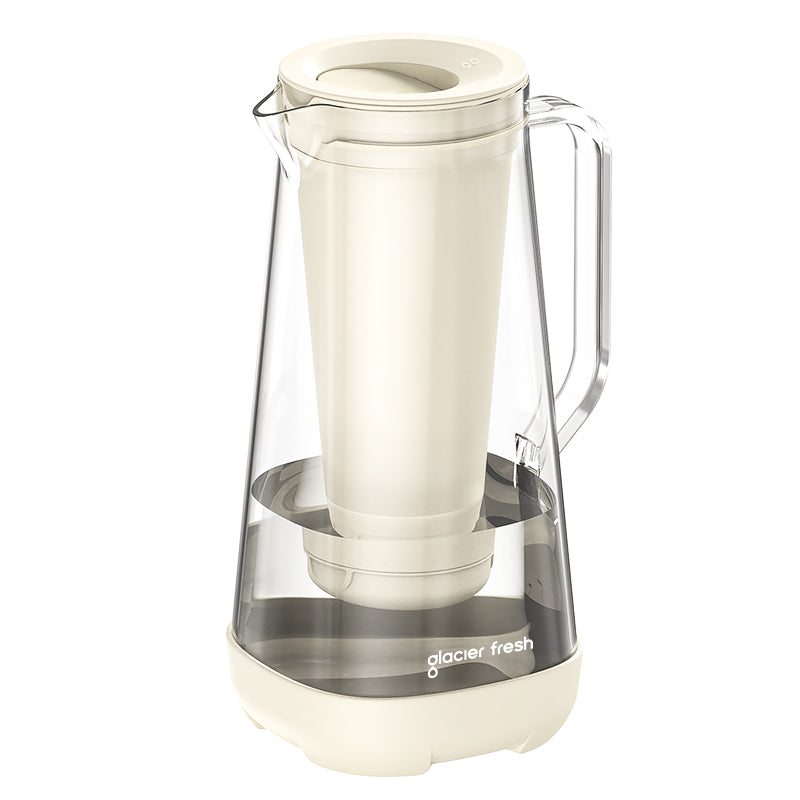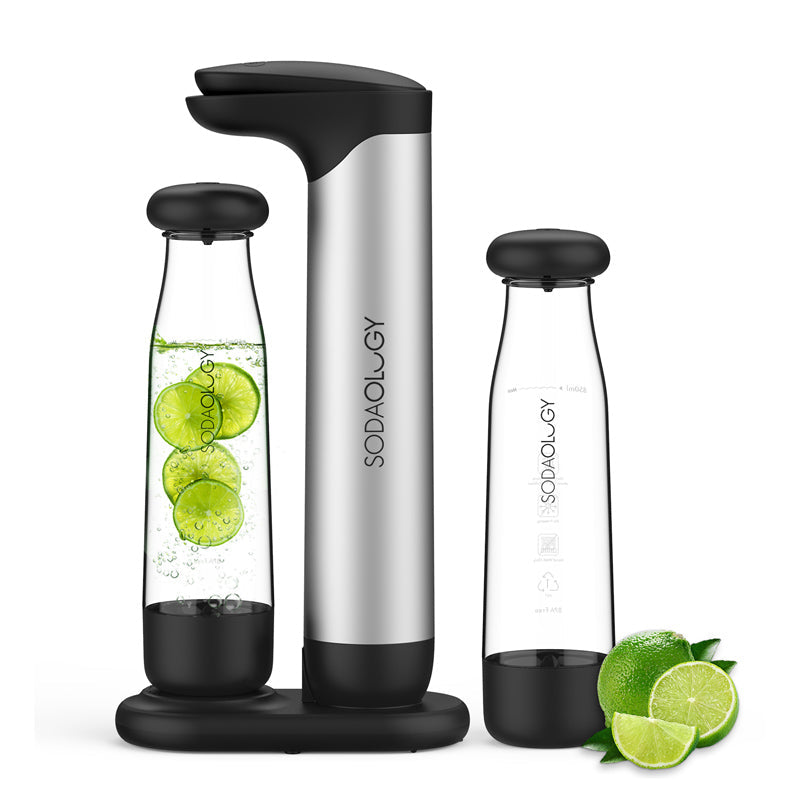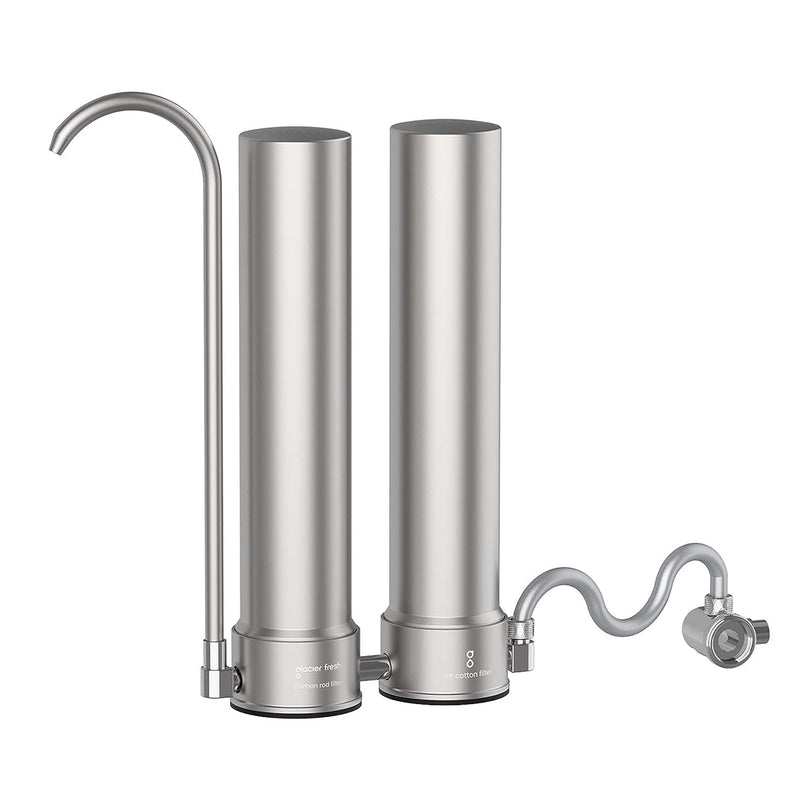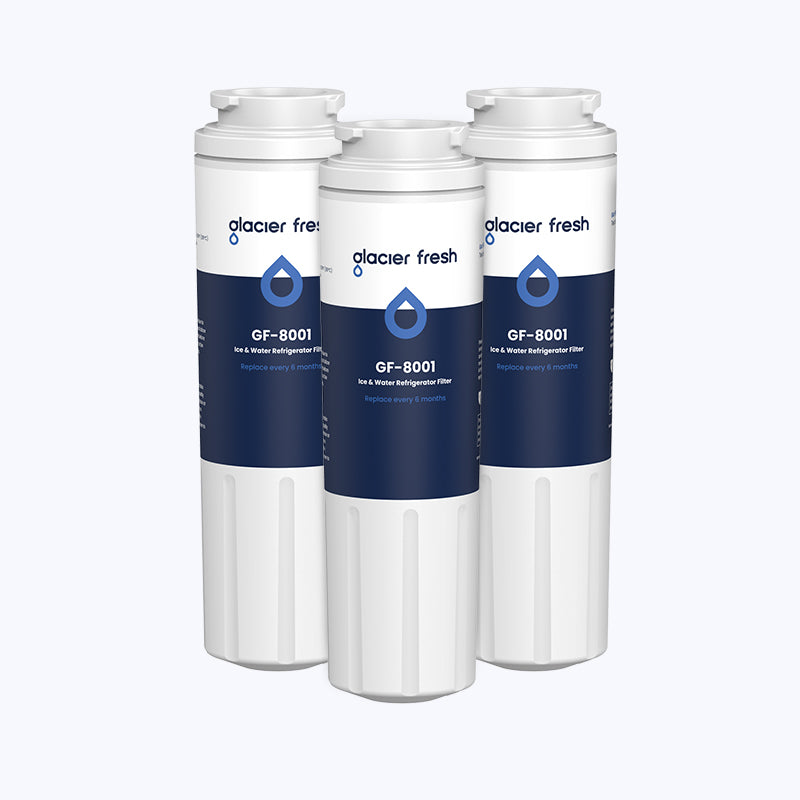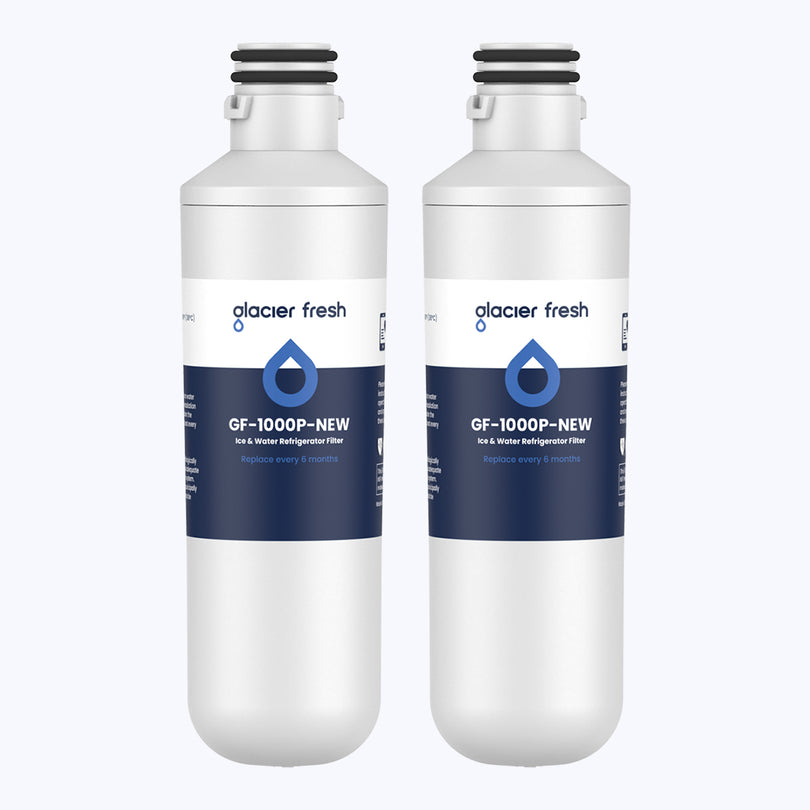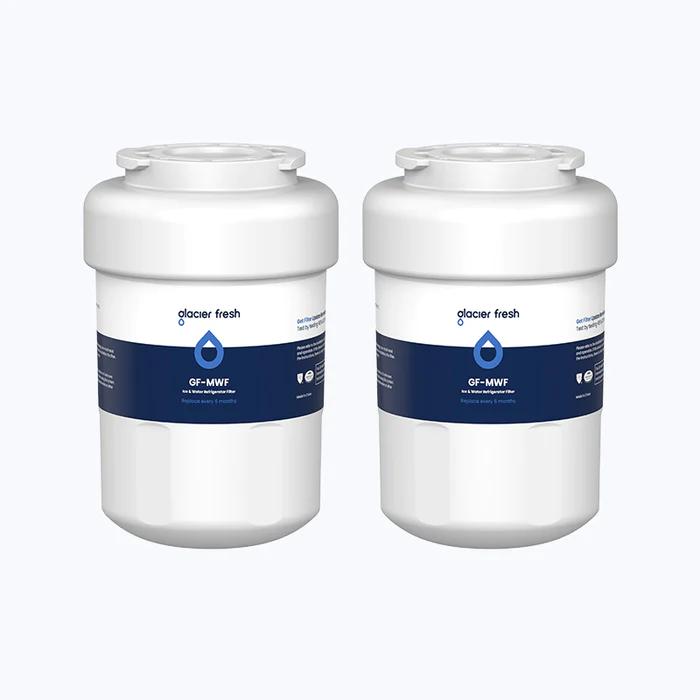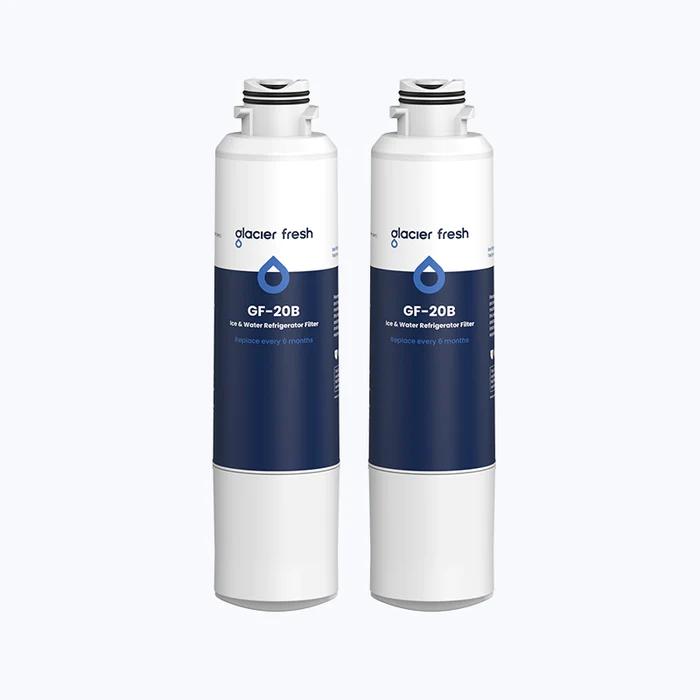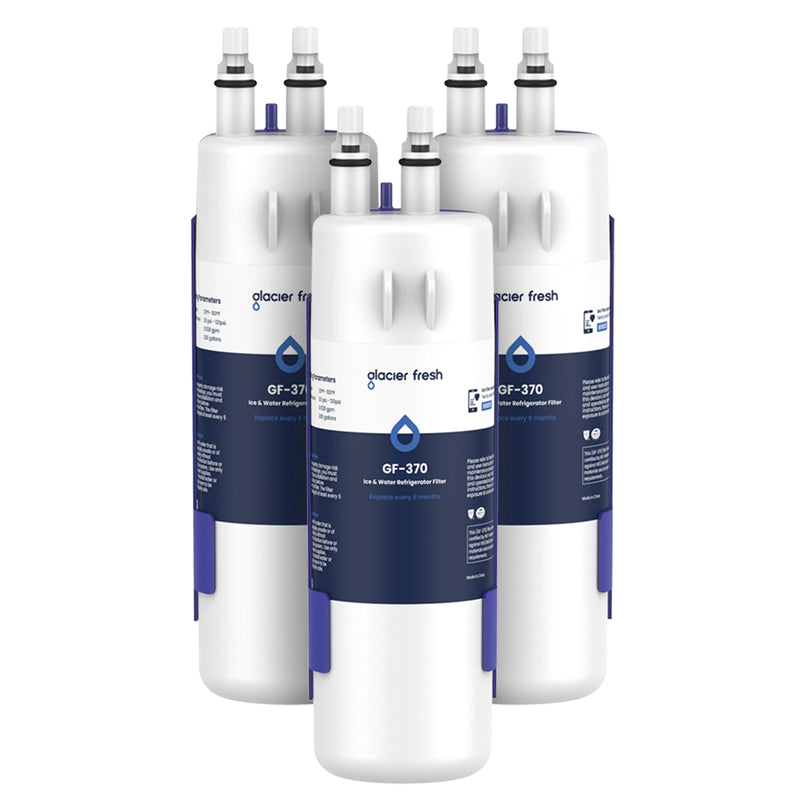Table of Contents:
US Drinking water quality standard
Common Contaminants In Tap Water
Main Structure Of Refrigerator Filter
What Harmful Substances Can The Water Filter Remove From Tap Water?
What Substances Can Not Be Removed By The Refrigerator Water Filter?
How Does Coconut Shell Activated Carbon Filters Harmful Substances From Water?
Can An Old Refrigerator Water Filter Make You Sick?
How Frequently Should You Change Your Refrigerator Water Filter?
Signs You Need To Replace Your Refrigerator Water Filter
How To Choose Quality Water Filters?
Summary
Are you wondering if your water filter is doing its job? I have thoroughly researched and tested refrigerated filters to understand their functioning. Read this article to gain awareness about what constitutes your tap water and how your water filter helps you get rid of them.
Water filters are built to separate out impurities like mineral salts, debris, sediments, organic matter, chemicals, and microorganisms when water is passed through them under pressure. Water filters are connected to the main water pipeline or tap water to provide clean water.
US Drinking water quality standard
Congress passed the Safe Drinking Water Act (SDWA) in 1974. Amendments were added in 1986 and 1996 for the protection of drinking water.
Under this act, Environmental Protection Agency (EPA) has set standards for drinking water quality and monitors states, local municipalities, and water suppliers to enforce those standards. They have also set permitted contaminant levels and suitable treatment methods to control over 90 different contaminants in public drinking water.
Common Contaminants In Tap Water

Tap water directly from the municipality or nearby well has various dissolved minerals and contaminants. Some of these substances can be healthy at limited levels, while others are detrimental to the body’s functioning. Let’s look at some major components of tap water:
-
Chlorine (Cl)
Chlorine, a germicide, is added to water purposely by municipal bodies to kill bacteria and viruses and make it safe for drinking. Its side effects include poor aesthetics of drinking water.
-
Chloride (Cl-)
It's a natural mineral that doesn’t need filtration and is necessary to maintain osmotic balance in our body.
-
Nitrate (NO32-)
Nitrates are important compounds for plant growth and their presence in human drinking water causes no harmful effects under limited quantities.
-
Sulfate (SO42-)
Usually found in groundwater, sulfates are healthy salts that get dissolved in water when it passes through mineral rocks.
-
Bicarbonate (HCO3-)
Bicarbonates are formed when water interacts with dissolved carbon dioxide and helps maintain the pH balance in our blood.
-
Phosphate (PO43-)
Phosphates are other plant growth minerals that act as corrosion inhibitors when present in water supplied through metal pipelines.

-
Calcium (Ca2+) & Magnesium (Mg2+)
These naturally occurring elements in water are essential for all living beings. While calcium strengthens bones and teeth, magnesium aids muscle contraction and protein synthesis.
-
Sodium (Na+) & Potassium (K+)
All natural water bodies contain sodium and potassium. These ions should be present in drinking water for impulse conduction, blood pressure regulation, and prevention of cardiovascular diseases.
-
Lithium (Li+)
Lithium is another desirable component, naturally present in water that shows anti-depressant properties even in minimal quantities.
-
Fluoride (F-)
Fluoride is a common and abundantly present element in water as it seeps in through rocks. It helps reduce tooth decay and maintain bone strength, while can be a problem at high levels.
-
PFAS
Perfluoroalkyl and Polyfluoroalkyl Substances (PFAS) are a group of complex molecules and polymers manufactured in various industries that may leach into surface water. They can be effectively removed by carbon block filters at home.
-
Heavy Metals (Copper, Lead, Arsenic, etc.)
Heavy metals are present in water in the form of ions or salts. They end up in water pipelines from wastewater of various factories and their accumulation in the body can cause serious health problems.
-
Arsenic
Arsenic, found in soil and rocks, mixes with surface water and ends up in our water pipelines. Activated carbon filters can remove 30-70% arsenic but are insufficient in places where this contamination is highlighted as a real problem.
-
Volatile Organic Compounds (VOC)
Volatile compounds evaporate quickly and can be detected through smell and color. While some may be completely safe, others are known to be toxic.
-
Pharmaceuticals
With the immense growth of the pharmaceutical industry, levels of pharmaceuticals and their metabolites are increased in the water supply. They can cause serious side effects even in low quantities.
-
Microplastics
Plastics are non-biodegradable and often accumulate in the body if consumed. With the increase in plastic use, their micro polymers escape in water pipelines and may become a threat in the long term.
-
Total Suspended Solids (TSS)
TSS are not contaminants, but substances like silt, salts, and decaying plant or animal matter. While they are harmless at low levels and in smaller size range, excess quantities can cause havoc.
-
Pesticides & Herbicides
Pesticides and herbicides are strong chemicals sprayed on plants to control pests and weeds. Due to leaching, they escape into water bodies and ultimately end up in our water supply, if appropriate filters are not installed.
-
Bacteria & Viruses
Microorganisms can skip anyone’s attention due to their inconspicuous sizes. They are omnipresent and cannot be avoided. Although chlorine is added to kill them, they cannot be completely removed unless specialized water filters are used.

Main Structure Of Refrigerator Filter

Before understanding the working of a refrigerator filter, it is essential to understand their structure and build quality. The filter housing is made from Polypropylene (PP) which is filled with activated carbon as the filter medium. Activated carbon blocks can be charcoal, graphite, or coconut shells.
Coconut-shell activated carbon filters are manufactured from a wisely cultivated renewable resource - coconuts. The coconut shell has proved to be highly useful because of naturally present micro-pores for efficient filtration. They require less processing than commonly used activated carbon blocks and yield better results.
What Harmful Substances Can The Water Filter Remove From Tap Water?
Different filters are specialized to filter different substances. Refrigerator filters containing activated charcoal medium can easily remove several impurities. Charcoal is known for its adsorbing power as it can bond with various chemicals on its surface.
Just as charcoal is used to remove toxins and poisons from our intestines and stomach, it can interact and absorb various toxins, drugs, viruses, bacteria, fungi, and chemicals found in water. Here’s a list of substances that can be removed by refrigerator filters:
- Chloride (Cl-)
- Pesticides
- Chlorine (Cl)
- Chlorine bi-products
- Nitrate (NO32-)
- Herbicides
- Phosphate (PO43-)
- Lithium (Li+)
- Pharmaceuticals
- Microplastics
- PFA
Activated charcoal can often help clear toxins and drugs that include:
What Substances Can Not Be Removed By The Refrigerator Water Filter?

Unfortunately, your refrigerator filters cannot take care of it all. Here are some substances that may need special attention if present at harmful levels:
-
Radionuclides
Radioactive elements in water that are usually not discussed. Water treatment plants and underground water sources near nuclear plants or radioactive waste have a risk of being contaminated with radionuclides. They are a rising concern as their presence is harmful to the human body and cannot be removed by refrigerator filters.
-
Most Microbiological Contaminants
Refrigerator filters cannot eliminate are microbiological contents of the water, including small bacteria, viruses, cysts, coliform, protozoa, and others. The good news is that many microbes are killed by the acid in our stomachs and cannot cause diseases. However, being precautious is important.
-
Heavy Metals
Most refrigerator filters cannot remove significant amounts of heavy metals and their salts, such as copper or iron. Note that iron isn’t considered a contaminant because of its pro-health properties. Still, if these metal ions are present in excess, they lead to problems.
-
Inorganic Pollutants
Asbestos and Arsenic are two inorganic substances that are only partially reduced by refrigerator filters. They are not usually present in high quantities in the water supply. But if present, they must be removed.
-
Healthy Minerals
Carbon block refrigerator filters cannot remove healthy minerals such as sodium, potassium, magnesium, calcium, and fluorine from your drinking water. It is ideal, as these minerals are essential for the well-being of your body. But again, if they are in excess and causing trouble, search for a solution.
-
Hydrocarbons or Petroleum Distillates
PHCs (Petroleum Hydrocarbons) are a part of a broad group of chemical compounds originating from crude oil. They escape into water bodies and may end up in your drinking water. However, the bad smell or taste may easily help you detect their presence.
-
Dissolved Solids
Minerals, metals, salts, and other related compounds are collectively known as dissolved solids. Refrigerators cannot remove significant amounts of TDS (Total Dissolved Solids) from the water. However, these substances are not considered contaminants as their presence is often natural and healthy for humans.
How Does Coconut Shell Activated Carbon Filters Harmful Substances From Water?
The pore structure plays a major role in the functioning of coconut-shell-activated carbon filters. They also have fused unorganized structures that increase the surface area for holding pollutants.
Most of the contaminants are greater in size than water molecules. Hence, water passes all barriers while its impurities are left behind. Let’s look at the 3 filtration methods of activated carbon:
-
0.5-micron pore filtration
Any substance bigger than 0.5 microns cannot pass through activated carbon filters. So, all the dissolved solids, minerals, and even some large bacteria are filtered out. Substances like microplastics, pharmaceuticals, pesticides, debris, rust, and mineral salts are removed through pore filtration.
-
Physiosoption
Also known as physical adsorption, it is the process of sticking of dissolved solids and molecules onto the surface of activated carbon as they pass through. Thus, impurities stay back while the water moves forward.
Substances that are adsorbed on activated carbon filters are chloride (Cl-), pesticides, chlorine (Cl), chlorine bi-products, nitrate (NO32-), herbicides, phosphate (PO43-), lithium (Li+), pharmaceuticals, and microplastics.
It also helps remove certain drugs and toxins like NSAIDs, OTC anti-inflammatories, sedatives, calcium channel blockers, dapsone, carbamazepine (Tegretol), malaria medications, and methylxanthines (mild stimulants).
-
Chemisorption
Mainly reduction, catalytic decompositions, and coordination reactions occur on activated carbon, producing less harmful substances and gases. For example, here are the equations for chlorine:
Reduction:C* + NH2Cl + H20 → NH3 + H+ + Cl- + C*O
Catalytic Decomposition: CO + 2NH2Cl → C + 2H+ + 2Cl- + H20 + N2
To summarize: Mostly mineral salts and ionized molecules participate in chemical adsorption. They form different complex compounds or reduce to less harmful molecules or gases that evolve easily.
Can An Old Refrigerator Water Filter Make You Sick?
Yes, an old refrigerator water filter that has been filtering water for a long time must have gathered high amounts of contaminants and can make you sick. As more water passes through, it is prone to bring along those contaminants and get dirty. So, if you continue using the filter without replacement, it may lose the ability to eliminate bacteria and carbon, which you end up consuming, thus, making you sick.
Technically, the chemicals and bacteria should be separated from water and remain in the filter. So, leaving the filter unattended can lead to build-up in other parts of the fridge after its saturation. It causes deterioration in the fridge’s functionality, which starts wearing out with time. The clogged filter also tends to slow down water supply due to less space for water to pass.
How Frequently Should You Change Your Refrigerator Water Filter?
Generally, 6 months is advised as most filters suffer enough wear and tear in this period. However, when the water temperature is high in summer, it is recommended to replace it every three months because of high water demand.
This is because your water filter has to work harder in summers than in other seasons and, thus, ages faster. Additionally, high temperatures in the summer months also lead to the breeding of bacteria.
The water quality reduces with time not because of a decrease in the adsorption efficiency of the activated carbon but due to the accumulation of organic matter. In the long-term, this adsorbed organic matter becomes a hotbed of bacteria and their growth. So, if you don’t want to drink contaminated water, replace your filter timely.
Signs You Need To Replace Your Refrigerator Water Filter
Don’t let ignorance make you pay later. While buying appliances might seem easy, remember that they require maintenance throughout their lifespan. Untimely replacement of your refrigerator water filter can lead to health risks. Ensure you take care of the following signs for a healthy water supply:
-
The Indicator Light Is On
Most refrigerators with inbuilt water filters have an indicator light feature to notify the user about replacement. You will usually notice blue, yellow, and red lights combined on the panel to indicate the current position of the water filter.
Make sure you notice when the light turns red, and replace the filter immediately. It is recommended to buy the filter at the yellow indication so that you are already ready for the upcoming replacement.
-
It’s Been 6 Months
If your refrigerator filter hasn’t indicated a red signal for a long-time, be alarmed about your water quality and check if your indicator system is working properly. If your refrigerator does not have indicating lights, mark the dates on the calendar!
6-months’ time is considered enough to make a filter replacement. However, different refrigerator water filter companies may recommend different timespans for the replacement, so ensure you have read your instruction manual properly.
-
Your Water Dispenser Is Slow
Slow water supply is a clear sign of blockage. If your refrigerator water dispenser is discharging water slowly, call a professional to get it checked. You may find that the filter is clogged due to debris and contaminants, which need to be changed soon.
-
Your Ice is Gross
If you have an ice maker in your refrigerator, the ice's appearance, odor, and taste can reveal a great deal about the condition of your water filter. The bad smell, bitter taste, and tinted appearance should alarm you immediately.
-
Your Water Tastes Bad
Similar to ice properties, if the discharged water from the dispenser looks, smells, or tastes different, search for the cause immediately. Even when water appears clear and transparent with no signs of smell, bitter taste is something that you should not ignore. It is a sign of poor filter health that needs replacement.
How To Choose Quality Water Filters?
Choosing the right type of water filter is necessary to safeguard your and your family’s health. You should always choose water filter types as per your need and usage.
Firstly, you should always check for the standard certification issued by government organizations for a particular filter before buying. National Sanitation Foundation (NSF) certification types 42, 53, 401, etc., indicate different filters' efficiency levels and specializations.
For example, NSF 42 removes chlorine, among other common contaminants.
Next, check the raw materials used to build the filtration system. The quality of a water filter depends on the kind of filtering element used inside it. Coconut-shell activated carbon filters that use coconut shells are, thus, eco-friendly.
You should also check the filter housing's durability for long-lasting support. A pure or good-quality PP (Polypropylene) casing lasts longer than adulterated polymers. Usually, a high-standard plastic housing is preferred over steel or other metals as they are prone to corrosion over time.

Summary
Overall, water filters have become necessary in every household, especially for drinking. Even after passing several cleaning stages in the municipality plants, excess minerals and harmful impurities are left behind. These pollutants reach our households and are often invisible. Thus, a good water filter reduces worries and provides satisfaction to people.

